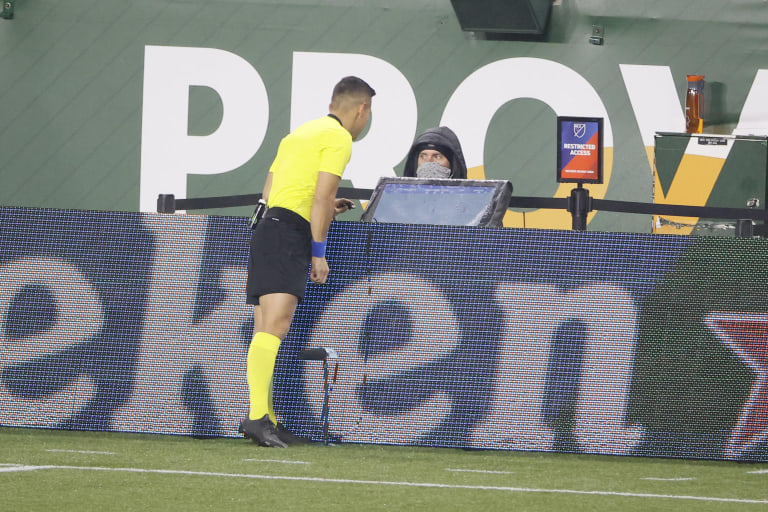In the latest edition of MLS 101, we explore Video Assistant Referee technology and its impact on the game.
What does VAR stand for?
Every Major League Soccer match uses a VAR, or Video Assistant Referee. This is a qualified official who watches the game on screens that show every available broadcast feed camera angle, in order to provide assistance and advice to the referee on the field.
How does it work?
The VAR will communicate with the on-field referee whenever a play may merit review, but may only be used for “clear and obvious errors” in four match-changing situations: goals, penalty decisions, direct red-card incidents, and cases of mistaken identity. So, for example, it cannot be used to check an offside decision if the play did not result in a goal.
VAR is used for incidents in the four match-changing situations—often in the background, without fans noticing. When appropriate, the referee will be advised to watch the incident on a screen by the side of the field.

VAR cannot overrule the final decision of the referee on the field (it is only used for advice) and players may not ask for it to be used.
In the 2019 season, MLS referees reviewed 41 of 1,257 goals scored in league play, with 27 of those goals eventually being ruled out (per Goal). That season, 97.85 per cent of MLS goals did not require VAR intervention.
When and why was it introduced?
In 2017, following a successful trial period, and approval from the International Football Association Board (IFAB) MLS became one of the first domestic leagues in the world to adopt VAR.
Match officials can make mistakes which can have an impact on the outcome of a game, so it is beneficial for them to embrace the power of technology to aid their decision-making process.
“We’ve tried to implement it in MLS in a way that really does achieve what it was set out to achieve,” said Howard Webb, general manager of the Professional Referee Organization (PRO). “That’s a maximum benefit to a minimum interference. Good officiating starts on the field of play. It starts with referees making good calls based on all of the considerations, and that feel for the game. And the VAR is there as a safety net, should the official not be able to make a good call.”
Webb was the match referee of the 2010 World Cup final, where a controversial foul by former LA Galaxy midfielder Nigel De Jong was awarded a yellow card. With the help of VAR, Webb admits, he would have given a red card for the incident.
Essentially, VAR is intended to provide the referee with more information to make better-informed decisions.
Is VAR controversial?
The implementation of VAR has sparked debate around the world, as some argue it slows down the game and detracts from its flowing cadence.
It has also become controversial for its implementation in certain leagues, such as the Premier League, where Hawk-Eye technology is used to draw lines on the field to rule on offside calls. The thickness of these lines, along with the point at which they are drawn, has become controversial.
However, MLS has largely avoided controversy—and is continually praised—due to the manner in which it implements VAR…
How is VAR used in MLS compared to other leagues?
Major League soccer avoids one of the biggest VAR controversies as it does not use virtual offside technology.
“The configuration of the cameras within our stadiums doesn’t really lend itself at the moment to the implementation of those lines,” explains Webb.
For offside calls, VAR is used to give the referee replays and a chance to review, but lines are not drawn on the field.
Additionally, MLS has always allowed referees to watch replays of incidents in the Review Areas by the side of the field. The English Premier League did not initially allow this—due to concern it would slow the game—but has since acquiesced with MLS.
During 2020’s MLS Is Back tournament in Orlando, TV viewers were able to see the replays from the referees’ Review Area in real time, while listening to their audio communications.













